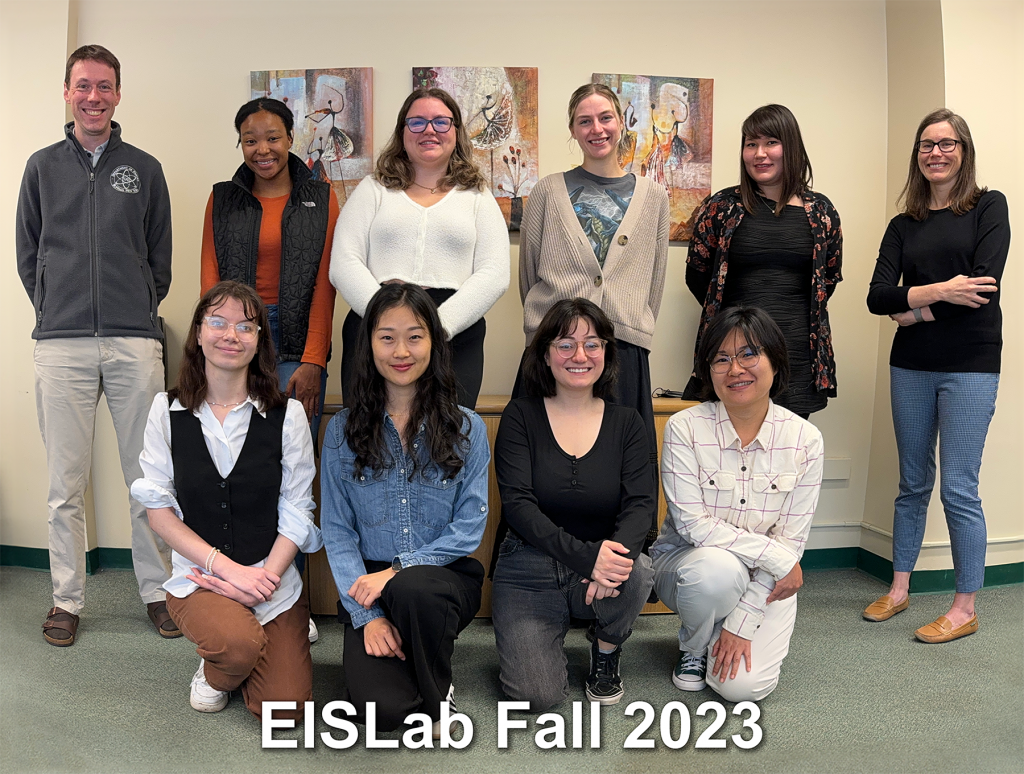The EIS lab investigates the role of the body in teaching and learning in STEM contexts. In particular, we look at how gesture and other embodied communicational resources are used in mathematics, computer science, and science classrooms. Our interdisciplinary work is informed by interactional approaches to embodiment and multimodality, including ethnomethodology, conversation analysis, and the co-operative action framework.
Check out our main areas of research below:

(1) How STEM teachers and students are responsive to each other’s gestures and multimodal resources

Flood, V. J. Harrer, B. W. (2022) Teachers’ responsiveness to students’ gestured candidate responses in STEM whole-class interactions. Classroom Discourse.
Flood, V. J. Wang, X. C., & Sheridan, M. (2022) Embodied responsive teaching for supporting computational thinking in early childhood. In Proceedings of the 16th International Conference of the Learning Sciences ICLS 2022. International Society of the Learning Sciences. *Winner ICLS Best Paper Award*
Flood, V. J., Shvarts, A., & Abrahamson, D. (2020). Teaching with embodied learning technologies for mathematics: Responsive teaching for embodied learning, ZDM Mathematics Education, (52)7, 1307-1331.
Flood, V. J., Shvarts, A., Abrahamson, D. (2022) Responsive teaching for embodied learning with technology. In S. Macrine & Fugate, J. (Eds.), Movement matters: How embodied cognition informs teaching and learning. MIT Press.
(2) How STEM students use gesture and other multimodal resources

See Projects for a description of our NSF-funded project DiGEST Physics.
Wang, X. C., Flood, V. J., & Cady, A. (2021). Computational Thinking through Body and Ego Syntonicity: Young Children’s Embodied Sense-Making Using A Programming Toy. In Proceedings of the 15th International Conference of the Learning Sciences ICLS 2021. International Society of the Learning Sciences.
Flood, V. J. & Harrer, B. W. (2020). How physics students re-use gestures in collaborative knowledge building. In D. Keifert (Chair), Analytical designs: Goodwin’s substrates as a tool for studying learning. In M. Gresalfi, M. & I. S. Horn (Eds.), The Interdisciplinarity of the Learning Sciences, 14th International Conference of the Learning Sciences (ICLS) 2020, Volume 2 (pp. 374-381). Nashville, TN: International Society of the Learning Sciences.
(3) How STEM teachers use gesture and other multimodal resources in instruction

Flood, V. J. (2021). The secret multimodal life of IREs: Looking more closely at representational gestures in a familiar questioning sequence. Linguistics and Education, 63, 100913.
Flood, V. J. & Harrer, B. W. (2023) Kinetically-held questions: Representational gesture post-stroke holds in whole class interactions in STEM. Linguistics and Education, 74, 101164.
